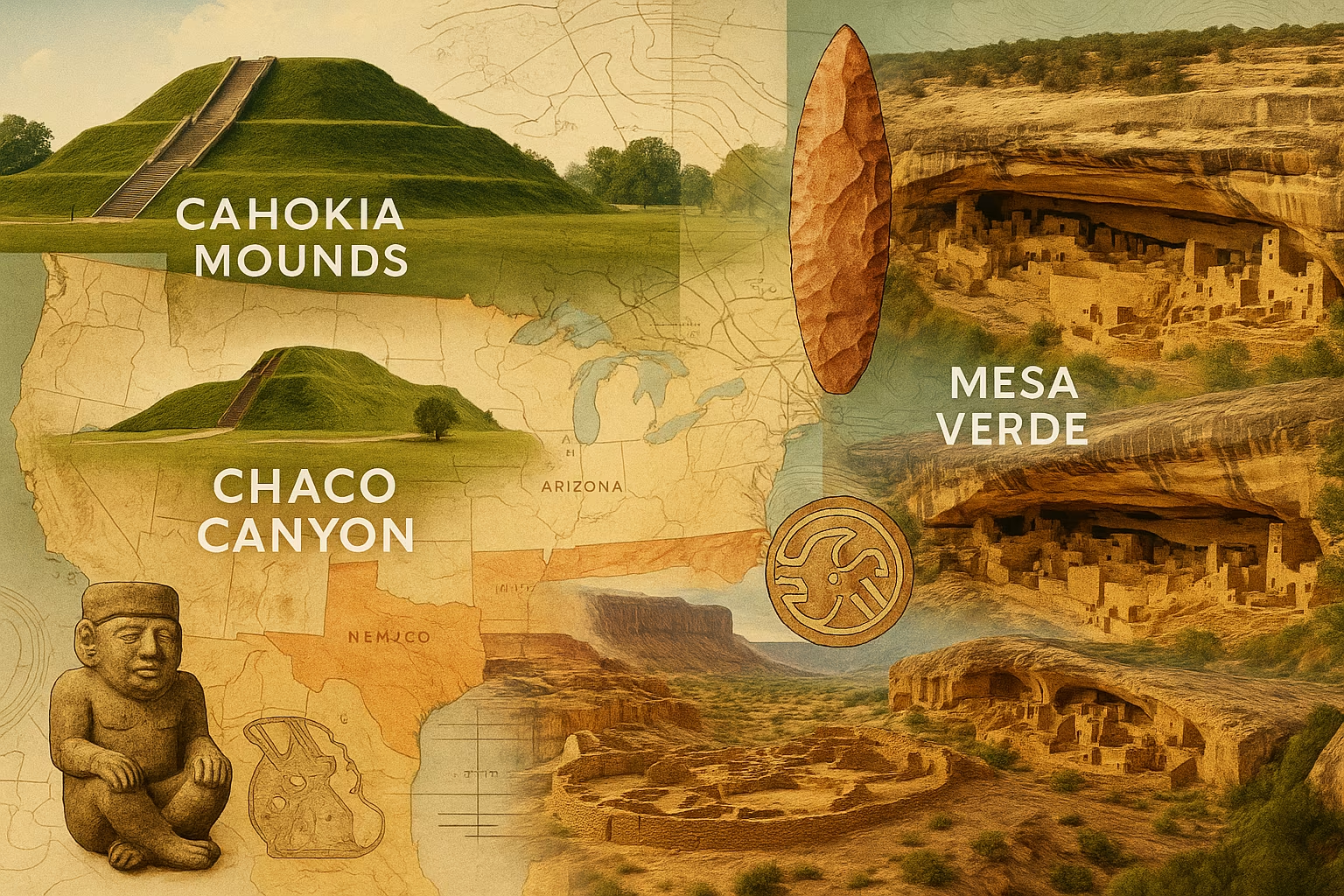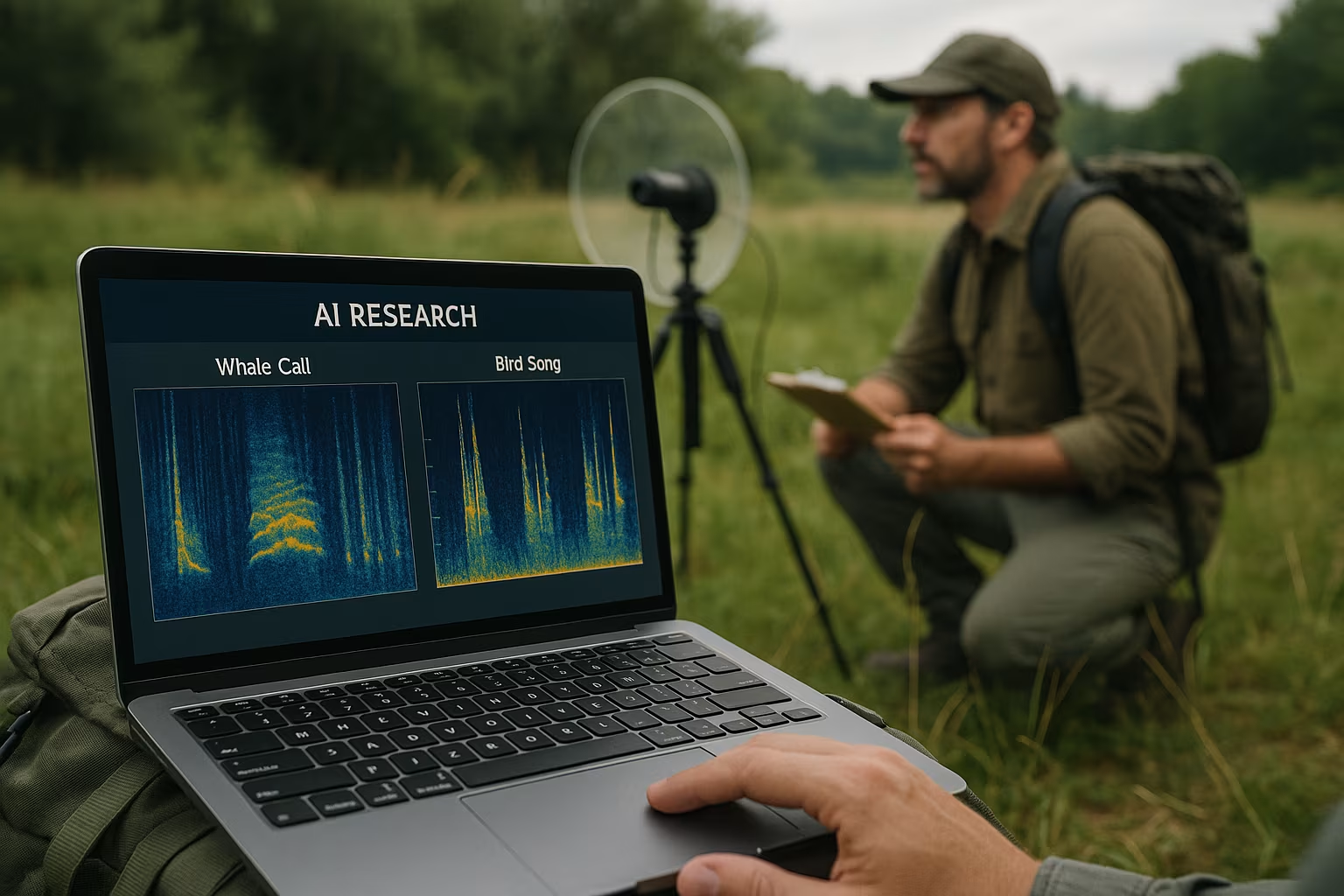The United States may be a relatively young nation in political terms, but its land holds an ancient and diverse history that stretches back thousands of years. From prehistoric Native American settlements to colonial forts and ancient ceremonial centers, the country is home to countless archaeological sites that reveal the complexity of its past. These places are more than just tourist attractions — they are invaluable windows into the cultures, technologies, and traditions that shaped the continent.
Here are 14 of the most important archaeological sites in the U.S., each offering a unique perspective on America’s deep and multifaceted history.
1. Cahokia Mounds – Illinois
Once the largest city in North America before European contact, Cahokia thrived between 1050 and 1350 AD. The site contains massive earthen mounds, including Monks Mound, the largest pre-Columbian earthwork in the Americas. Archaeologists believe Cahokia was a political, religious, and cultural hub for the Mississippian culture. Today, it’s a UNESCO World Heritage Site and a testament to the engineering skill of its builders.
2. Mesa Verde – Colorado
Home to the ancient Ancestral Puebloans, Mesa Verde National Park contains over 600 cliff dwellings built into canyon walls between the 12th and 13th centuries. Structures like Cliff Palace reveal advanced masonry techniques and a deep connection to the surrounding landscape. The park offers a glimpse into how these communities adapted to their environment.
3. Chaco Canyon – New Mexico
Between 850 and 1250 AD, Chaco Canyon was a major cultural and ceremonial center for the Ancestral Puebloans. The site’s monumental stone buildings, or “Great Houses,” align with solar and lunar cycles, suggesting advanced astronomical knowledge. Chaco’s road systems and trade networks extended across the Southwest.
4. Serpent Mound – Ohio
This enormous earthen effigy, stretching more than 1,300 feet, depicts a snake with a coiled tail. While its exact origins are debated, most researchers associate it with the Fort Ancient culture (1000–1650 AD). The mound’s alignment with solstices and lunar phases hints at its ceremonial and astronomical significance.
5. Poverty Point – Louisiana
Dating back to around 1700–1100 BC, Poverty Point was a massive complex of earthen ridges and mounds built by a hunter-gatherer society. The site is remarkable for its size and the complexity of its design, suggesting a high degree of social organization. It’s one of the earliest known large-scale earthworks in North America.
6. Jamestown – Virginia
Established in 1607, Jamestown was the first permanent English settlement in North America. Archaeological excavations have revealed the remains of the original fort, artifacts from daily life, and evidence of the struggles colonists faced in the New World. It’s a key site for understanding early European colonization.
7. Mammoth Site – South Dakota
Located in Hot Springs, this site contains the remains of more than 60 Columbian and woolly mammoths that became trapped in a sinkhole over 26,000 years ago. Excavations have provided invaluable insight into Ice Age fauna and paleoecology in North America.
8. Moundville Archaeological Park – Alabama
Once the second-largest city of the Mississippian culture after Cahokia, Moundville was a thriving political and ceremonial center between 1000 and 1450 AD. Its numerous mounds surround a central plaza, reflecting a sophisticated urban layout and hierarchical society.
9. Alibates Flint Quarries – Texas
For over 13,000 years, people quarried high-quality flint here for tools and weapons. The site holds evidence of prehistoric mining techniques and demonstrates the importance of resource distribution in ancient trade networks.
10. Fort Union Trading Post – North Dakota/Montana Border
This 19th-century trading post was a hub for commerce between Native American tribes and European-American traders. Archaeological work here has uncovered artifacts that reveal cultural exchange and adaptation during a transformative period in U.S. history.
11. Ozette Archaeological Site – Washington
In the 1970s, a mudslide revealed a perfectly preserved Makah village buried for hundreds of years. Thousands of artifacts, from wooden tools to woven baskets, provide a rare and detailed look at the daily life of the Pacific Northwest’s indigenous people.
12. Spiro Mounds – Oklahoma
Spiro was a powerful center of the Mississippian culture from 900 to 1450 AD. The site’s burial mounds have yielded an extraordinary collection of artifacts, including shell gorgets, copper plates, and ceremonial objects, revealing an extensive trade network that reached as far as the Great Lakes and Gulf Coast.
13. Cliff Dwellings at Bandelier National Monument – New Mexico
Bandelier contains cliffside homes and masonry structures built by the Ancestral Puebloans between 1150 and 1600 AD. Petroglyphs, kivas, and agricultural terraces offer insights into how these communities balanced spiritual life with environmental challenges.
14. The Gault Site – Texas
One of the most significant Paleo-Indian archaeological sites in North America, the Gault Site has yielded tools and artifacts dating back more than 16,000 years. Its findings challenge earlier timelines of human settlement in the Americas and continue to reshape our understanding of prehistory.
Why These Sites Matter
Each of these archaeological treasures tells a unique story about human ingenuity, adaptation, and cultural evolution. They reveal not only technological advancements but also the social and spiritual lives of the people who came before us.
In an era when urban development, climate change, and looting threaten heritage sites, preserving and studying these locations is more critical than ever. The lessons they hold — about sustainability, community, and resilience — remain profoundly relevant today.
Whether you are an archaeology enthusiast, a history buff, or simply curious about the deep roots of American culture, visiting these sites offers a powerful reminder that the land we live on has been shaped by countless generations long before us.





